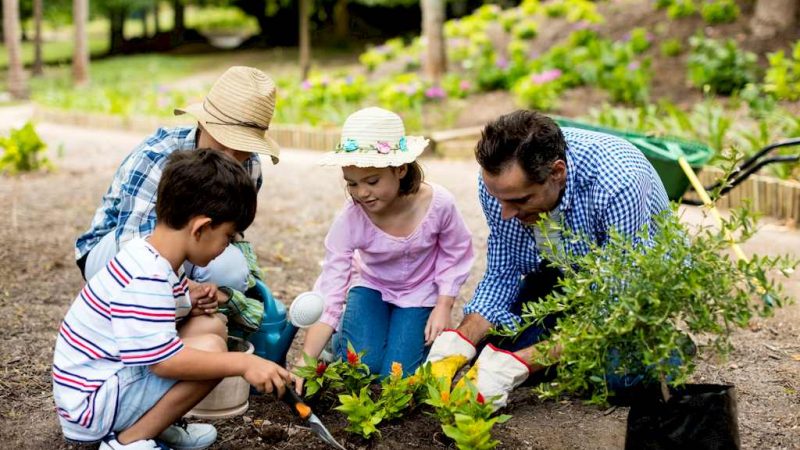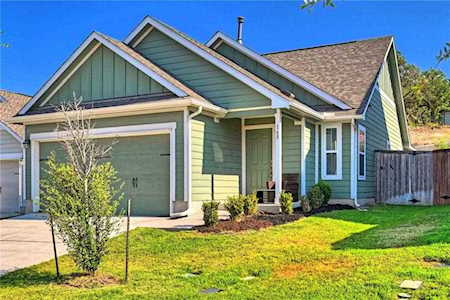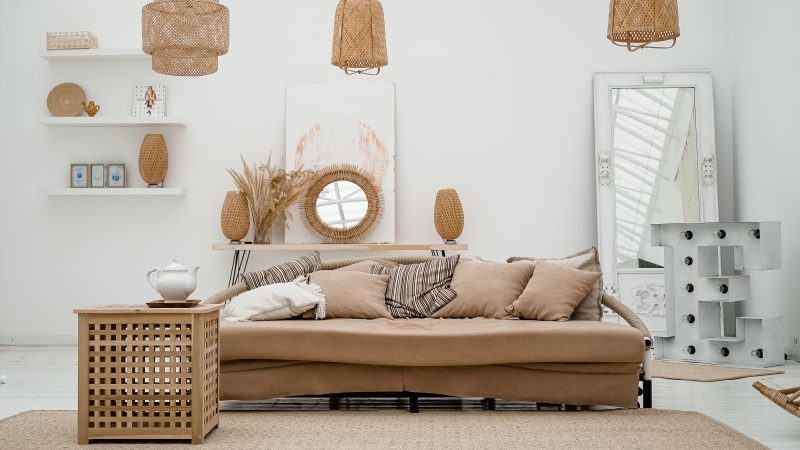The Ultimate Guide to Container Gardening
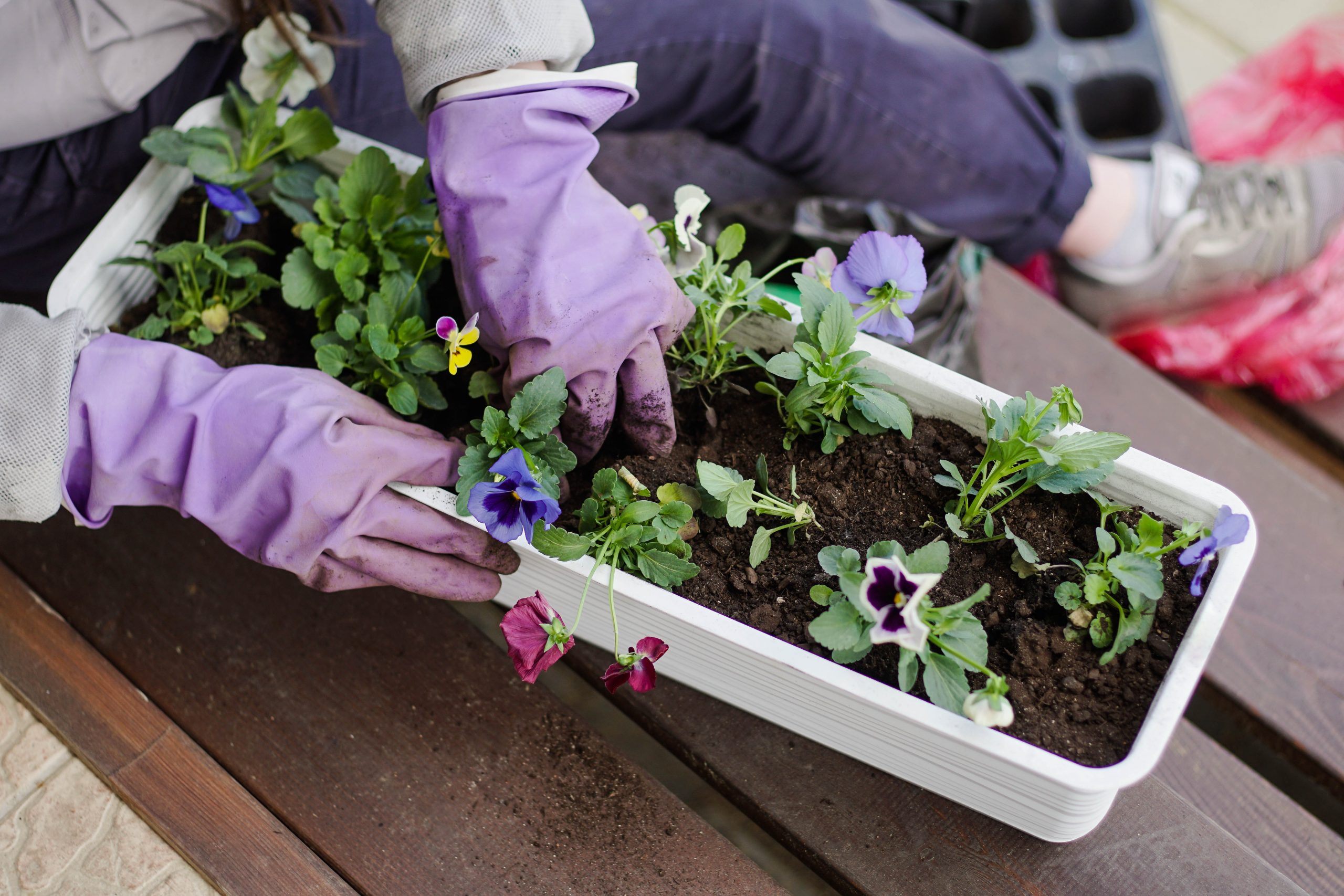
Gardening is a peaceful and relaxing activity that also lets you care for something beautiful. However, you don’t have to plant in flower beds or open areas. You can make a whole garden in a pot if you have the right tools and materials. This ultimate guide will give you all the tips and tricks for creating an amazing container garden that you can enjoy for years to come. Whether you are looking for a way to spruce up your living area or want to take advantage of your outdoor space, this guide will provide you with everything you need to get started.
Benefits of Container Gardening
In the past few years, gardening in containers has become more common, and for good reason! Growing plants in pots instead of standard gardening in the ground has many benefits.
To begin, planting in containers gives you more freedom and options. When plants are in pots, it’s easy to move them to where they will get the most sunshine and enjoy the best weather. This is helpful for people who live in homes or don’t have a lot of open room.
You can also have more control over the soil quality and ventilation when you grow in containers. You can pick the right dirt mix for each plant and make sure it drains well to keep the roots from rotting. This is especially important for plants like herbs and cacti that are sensitive to when their water level changes.
One more good thing about growing in containers is that it stops the spread of pests and diseases. Cross-contamination is less likely to happen when plants are growing in pots, away from the dirt and other plants.
Another great way to make your outdoor space look nicer is to garden in pots. You can make a garden that is both unique and attractive to look at by using pots that come in a range of sizes, shapes, and colors.
Essential Tools and Materials
When you decide to garden in containers, there are some tools and supplies you will need to make sure your garden does well. Some of these are:
Containers for gardening: You can put plants in a lot of different types of containers, such as window boxes, big pots, and simple terracotta tubs. Think about what kind of dirt each plant needs and how big the plants you want to grow are.
Soil: Make sure you use potting soil or yard soil that is made especially for planting in pots. This kind of soil is light and porous, so it drains better than regular yard soil.
Watering Can: You will need a watering can with a long spout that can reach into the buckets and fill them with water without spilling it all over the place. Pick one with an opening that can be adjusted so that you can change the flow rate based on how much water your plants need.
Trowel or Hand Shovel: You need a trowel or hand shovel to put seedlings in pots and mix waste or mulch into the soil by turning it over.
These are just a few of the most important things you will need to get your container garden started. By now you should have everything you need to start making your own backyard paradise!
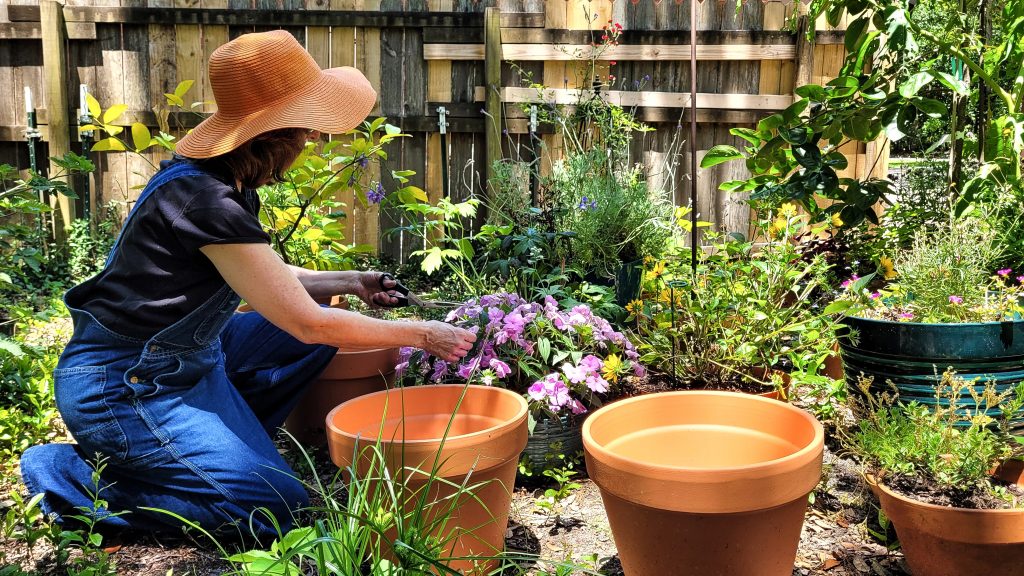
Choosing the Right Plants
Picking the right plants for your container garden is a big part of making your outdoor space work well. When choosing which plants to put in your pots, think about their size, how much light they need, and how much water they need. Some tall plants need bigger pots or supports, but herbs and other small plants can do well in even the smallest areas.
Flowers with lots of different colors will make any space look better, and plants with lots of leaves can look nice against other plants. Growing vegetables in pots is a great idea. Just make sure the pot is big enough and has enough drainage holes to let the extra water drain out.
When you water your plants, check on them every day and give them lots of water if they need it. Herbs like lavender and mint do better in dirt that is not too wet, but all other plants need to be watered often to stay healthy and grow well. As long as you take good care of it, your container garden will soon be a lovely haven!
Your container garden can become a beautiful oasis for you and your plants if you give it some thought and care on a regular basis. Now, let’s look at the different kinds of plants that do best in pots. This will help you choose the plants that will do best in your own place.
Type of Plant to Choose
There are a lot of different kinds of plants that you can use in your pot garden. Annual plants like impatiens, petunias, and marigolds can add color to your yard, but they need to be replaced every year. Lavender, daisies, and coreopsis are all perennials that grow year after year with little care. As an added bonus, herbs like mint, oregano, and thyme do well in pots and will add a pleasant smell to your yard.
If you have limited space or would like something that takes up less room, succulents are a great option. These drought-tolerant plants come in a variety of colors and shapes. There are also vegetables that can be grown in containers; tomatoes, peppers, cucumbers and beans all do well if provided with proper drainage. With so many options available, you can create the perfect container garden for your home!
Considerations for Outdoor Containers
When selecting a container for your outdoor garden, there are several factors to consider. The size of the container should be appropriate for the type of plants you want to grow – larger containers are best for vegetables and tall plants, while smaller containers work well for herbs and flowers. It’s also important to make sure the container has drainage holes to allow excess water to escape. Window boxes can provide an attractive option for growing flowers on an upper level such as a balcony or patio railing, but be sure your window boxes can support the weight of soil and plants.
When it comes to material, terra cotta is a popular choice due to its breathability and ability to absorb moisture, but plastic containers are lightweight and often come in decorative designs that can add charm to your outdoor space. Whichever type of container you choose, remember that healthy plants require frequent watering and good quality soil. With these considerations in mind, you’re sure to create a stunning container garden!
Considerations for Indoor Containers
When selecting a container for your indoor plants, there are several factors to consider. The size of the container should be appropriate for the type of plants you want to grow – larger containers are best for tall plants, while smaller containers work well for herbs and flowers. It’s important to make sure the container is lightweight and easy to move when needed.
If you’re looking for decorative options that add charm to your indoors space, ceramic pots come in a wide range of designs and colors. Plastic or terracotta can also be used, but they need proper drainage holes or trays to avoid overwatering. Whichever type of container you choose, remember that healthy plants require plenty of sunlight and adequate ventilation. With these considerations in mind, you’re sure to create a thriving indoor garden!
Soil and Fertilizer for Container Gardens
When it comes to soil and fertilizers for container gardens, the type you choose will depend on the plants you intend to grow. Generally speaking, garden soil is not ideal for containers because it doesn’t provide adequate drainage and may contain too much clay or sand. Container soils contain a mixture of peat moss, perlite, vermiculite and compost that provide good aeration and drainage. For added nutrients, you can mix in slow-release fertilizer or liquid fertilizer into the soil before planting.
Fertilizing your container garden once every two weeks during the growing season ensures your plants get all the necessary nutrients they need to thrive. When selecting a fertilizer for container gardens, be sure to look for one that contains essential micronutrients such as iron and magnesium. By taking these steps to ensure your plants have well-draining soil and adequate nutrition, you can create a lush container garden that will bring beauty and life to any outdoor space!
Potting Soil vs Garden Soil
When it comes to choosing the right soil for your container garden, you’ll need to decide between potting soil and garden soil. Garden soil is often too dense and compacted, making it difficult for roots to spread out and breathe – this can lead to stunted growth or even root rot in extreme cases. On the other hand, potting soil contains ingredients like peat moss, perlite, vermiculite and compost which are light and airy, providing good aeration and drainage so water won’t get trapped in the soil.
This allows oxygen to reach the roots of your plants more easily which is essential for their growth. You may also want to add a slow-release fertilizer or liquid fertilizer into your potting soil before planting for added nutrients that will help your plants thrive. So when selecting soil for your container garden, be sure to choose potting mix over garden soil for healthier plants!
Nutrients for Healthy Plants in Containers
Having healthy plants in containers is an important part of successful container gardening. To ensure that your plants get the nutrients they need to thrive, you should consider adding a slow-release fertilizer or liquid fertilizer to the potting soil before planting. This will provide essential nutrients to the plant’s root system and promote healthy growth.
It’s also helpful to regularly check your soil for additional nutrient levels as some plants may require additional nutrients throughout their growing season. Adding organic material such as compost or aged manure can also help replenish existing nutrients in your soil and provide additional benefits like improved drainage, increased water retention and better aeration. With regular fertilizing and composting, you can keep your container garden full of healthy, vibrant plants!
Fertilizing Your Container Garden
Fertilizing your container garden is an important part of keeping your plants looking good and growing strong. Adding fertilizer to the soil in your containers will provide essential nutrients for the plant’s root system and promote healthy growth. When selecting a fertilizer, choose one with slow-release properties that provide nutrients over a period of time rather than all at once. You can also add organic material like aged manure or compost to replenish existing nutrients in your soil and give it additional benefits like improved drainage, increased water retention, and better aeration. Finally, be sure to regularly check your soil for additional nutrient levels as some plants may require additional doses throughout their growing season. With regular fertilizing and composting, you can keep your container garden in tip-top shape!
Selecting the Right Container
Selecting the right container for your garden is an important decision that can affect both the health and longevity of your plants. Before you buy any container, consider its purpose. Is it for a window box or a larger outdoor container? Also, think about drainage—will the container need drainage holes and what size should they be? Finally, think about the type of plant you plan to grow and choose a material suitable for its needs.
Some materials are more suited to certain types of plants; for example, coir pots are great for rooting cuttings while terracotta is perfect for growing herbs. The size of the container is also important; make sure it’s big enough to accommodate the roots of larger plants and small enough so that smaller plants don’t get lost in the mix. With these considerations taken into account, you can select a container that’s both beautiful and practical!
Types of Containers to Use
When it comes to selecting the right container for your garden, there are a plethora of options out there. Depending on what you’re planning to grow, some containers will be better suited than others. For example, if you’re looking for a large outdoor space, terracotta pots or plastic buckets are great choices. On the other hand, if you’re restricted by limited space and want something to spruce up your windowsill, window boxes or hanging baskets are ideal. If you need something lightweight for herbs and vegetables in containers, coir pots are perfect. And if you want decorative accents around your patio or balcony, ceramic and metal planters can really brighten up the area with their bright colors and designs. Whatever type of container you choose, make sure that it has adequate drainage holes so that excess water can escape without drowning your plants!
Size and Shape of the Container
The size and shape of the container you choose for your garden is just as important as the type of container. If you’re looking to grow large plants, like trees or shrubs, then a larger container is necessary. Similarly, if you’re planning to grow vegetables and herbs, opt for a deeper pot that allows enough room for the roots to spread out and access nutrients. The shape of the pot is also important, as it will affect how much soil and water can fit inside. For instance, round containers have more surface area than tall ones, so they’ll hold more soil and water. However, tall containers are better suited for taller plants that need extra support. At the end of the day, it’s all about striking a balance between size and shape – both should be considered when choosing your container!
Drainage Holes and Watering Considerations
Drainage holes are an important part of container gardening, as they allow excess water to escape the pot and prevent soil from becoming waterlogged. To ensure adequate drainage, make sure your pot has at least one hole in the bottom that’s large enough for water to pass through. It’s also a good idea to place a piece of mesh or fabric over the hole to prevent soil from escaping. Additionally, be mindful of how much you water your plants – too much can cause root rot, while too little can stunt their growth.
As a general rule of thumb, check the moisture level of the soil before watering and only add more when it feels dry. When it comes to watering frequency, this will depend on several factors such as the size and type of container you’re using, as well as the type of plant you’re growing. However, most plants in containers need frequent watering; some may even need daily attention during hot summer months!
Planting Your Container Garden
Once you’ve chosen the right containers for your garden, it’s time to start planting! Before you get started, make sure your potting mix is moist and ready to use. If it’s too dry, water it until it reaches the right consistency. Then, begin by filling the container with soil and gently pressing down to create a level surface. Next, place your plants in their designated spots and press them into the soil firmly. Finally, add more soil around the base of each plant to ensure that they are firmly in place. Remember to leave some space between plants for growth and air circulation. For best results, be sure to water your newly planted container garden thoroughly after planting. This will help your plants settle in nicely and encourage healthy growth!
Preparing the Soil in Your Garden Container
Preparing the soil for your container garden is an important step to ensure that your plants thrive and grow healthy. Begin by selecting the right type of soil for your plants; some prefer a light, sandy mix, while others may need a richer loam or compost-enriched soil. Once you’ve chosen the appropriate soil, make sure it is properly moistened before adding it to your container. You also want to make sure that there are enough drainage holes in the bottom of your container so that excess water can escape and avoid root rot.
If you plan on planting vegetables or herbs, consider adding organic matter such as compost or manure to help increase nutrient content in the soil and promote healthy growth. Finally, be sure to mix everything together thoroughly before adding it to your garden container. Following these steps will provide your plants with the best environment possible!
Planting and Arranging Your Plants
When beginning your container gardening, it’s important to choose plants that are suitable for this type of gardening to ensure proper nourishment and hydration. If you plan on planting multiple types of plants in the same container, make sure to choose those that require the same amount of sun, water, and nutrients. When it comes to arranging your plants, there are a few things to consider. Taller plants should be placed in the center or rear of the container while smaller ones should be arranged around them. Additionally, be sure to leave enough space between each plant so they can grow without getting overcrowded. Finally, consider adding some bright colors with flowers or foliage as an eye-catching addition to your garden container!
Keep your container garden healthy with these tips.
Caring for your container garden is an important part of enjoying the beauty and bounty of your plants. Proper watering and fertilizing will help keep your plants healthy, while ensuring that all of the elements work together in harmony. Watering is especially important to container gardens, as these smaller spaces dry out more quickly than larger outdoor gardens. Be sure to water frequently enough so that the soil remains moist but not soggy.
You can also add liquid fertilizer to the water every few weeks or months to provide additional nutrients. Additionally, drainage holes are essential for proper drainage, so make sure each pot has at least one hole in the bottom. Finally, deadhead flowers regularly to promote new blooms and prune back foliage if it becomes too large or unruly. With a little patience and care, you’ll have a thriving container garden in no time!
Watering Requirements and Frequency
Watering your container garden is essential for its health and longevity. How often you should water depends on the type of plants, size of the container, and environmental conditions. Generally speaking, most container gardens should be watered at least once a week, though more frequent watering may be necessary in hotter or drier climates.
When watering, make sure to moisten the soil thoroughly until it is evenly damp but not soggy. If there is excess water in the bottom of the pot after a few minutes, drain it off so that your plants don’t become waterlogged. In addition to regular watering, consider adding a layer of mulch around each plant to help retain moisture between waterings. With proper care and maintenance, your container garden will provide months of beauty and bounty!
Pruning, Pests, and Disease Prevention
Pruning, pest control, and disease prevention are all important parts of keeping your container garden healthy. Pruning your plants is essential for maintaining their shape, removing dead or dying foliage, and encouraging growth. Deadheading flowers regularly and trimming back branches can keep your plants looking neat while also promoting new growth. To prevent pests from infesting your container garden, inspect the containers regularly for signs of insects and use natural pest deterrents such as neem oil or insecticidal soap.
Disease prevention is also key to a successful container garden; make sure your plants have plenty of air circulation by spacing them out properly, avoid overhead watering which can cause fungal diseases, and maintain healthy soil to provide a strong foundation for your plants. With proper pruning, pest control, and disease prevention techniques in place, you’ll be well on your way to having a thriving container garden!
Maximizing Space with Window Boxes or Vertical Gardens
Window boxes and vertical gardens are great solutions for making the most of small outdoor spaces. Window boxes can be attached directly to your home, providing an instant pop of color without taking up any valuable space in your yard. When selecting plants for a window box, opt for bright colors and low-maintenance varieties like petunias or pansies that will thrive with limited water and sunlight.
When there’s not enough room for a window box, consider creating a vertical garden instead. Vertical gardens allow you to grow more plants in less space—perfect for balconies or patios with limited floor area. You can create one using shelves, hanging pots, or wall planters; just make sure the containers are securely attached so they don’t fall off! Place taller plants at the back of your vertical garden to form a backdrop and use trailing flowers or vines to cascade down the sides. With a combination of bright colors and lush foliage, your vertical garden will be a stunning addition to your outdoor space!
Troubleshooting Common Problems
Container gardening can be a rewarding experience, but it does come with its own set of challenges. One of the most common problems gardeners encounter is root rot, which can be caused by overwatering or poor drainage. To prevent this, make sure your containers have adequate drainage holes and that you’re not watering your plants too often. If you notice brown spots on the leaves or stems, it could be a sign of disease or pests that need to be treated immediately.
Fungal diseases can also cause plant distress, so look out for yellowing leaves and wilting stems. Finally, inadequate light can also cause issues such as stunted growth or low flowering. If your container doesn’t receive enough sunlight, consider moving it to an area with more exposure or supplementing with artificial lighting. With the right care and attention, you can ensure a healthy container garden all season long!
Dealing With Excess Water in Containers
Container gardening can be a great way to make the most of a limited outdoor space, but it does come with its own set of challenges. One of the most common issues gardeners encounter is excess water in containers. This can be caused by over-watering or poor drainage and can result in root rot and other plant issues. To avoid this, always check the soil before watering your plants and make sure your containers have adequate drainage holes.
Additionally, you may need to adjust your watering schedule depending on the type of plants you’re growing and the climate you live in. If your container is filled with excess water after each rainstorm, consider investing in an overflow tray or saucer that will help keep extra water away from your plants’ roots. With proper drainage and regular monitoring, you can ensure a healthy container garden all season long!
Keeping Your Plants Healthy Despite a Limited Space
Gardening in a limited space can be a challenge, but it doesn’t have to be! To maintain a healthy container garden with limited space, it is recommended to choose the appropriate containers for your plants. Larger containers tend to hold more soil and water, while smaller pots are suitable for individual plants or herbs.
Additionally, make sure you’re using quality potting soil that will help retain moisture and give your plants the nutrients they need. And don’t forget about frequent watering! This is especially important during hot summer months when the sun can dry out the soil quickly. Finally, consider adding decorative elements like bright colors or aromatic herbs to liven up your garden and maximize its impact in a smaller space!
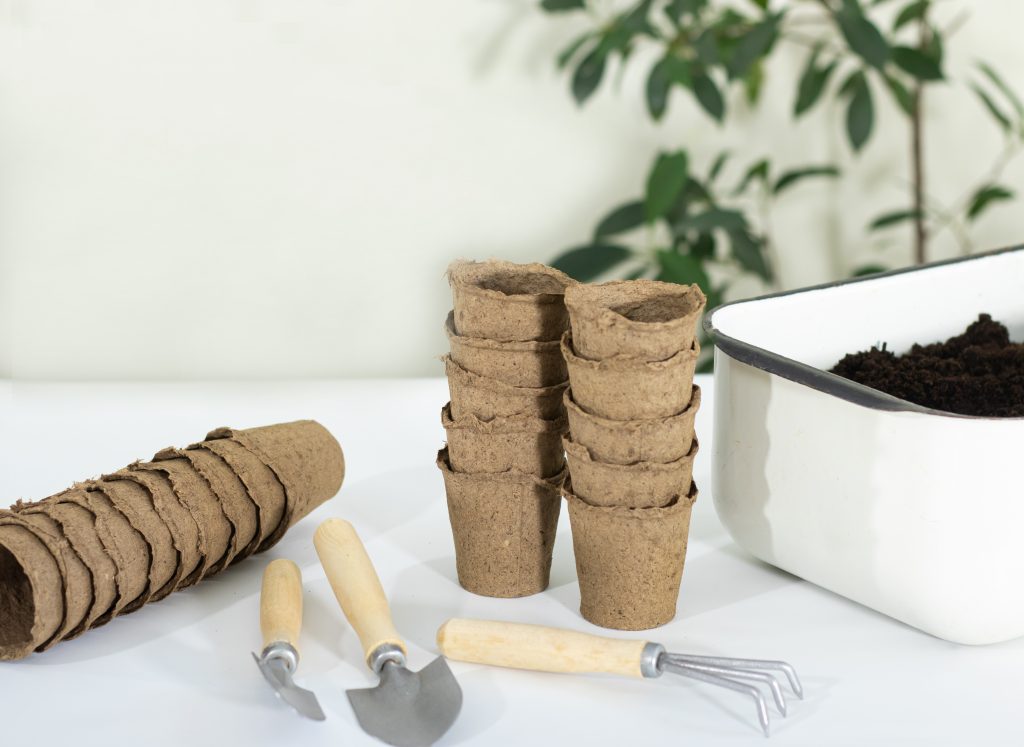
Conclusion
In conclusion, container gardening is a great way to bring the beauty of nature into any home. With the right combination of plants, soil and containers, you can create an outdoor oasis that will add beauty, color and texture to your outdoor space. Whether you want fresh herbs for cooking or a pop of bright color in your limited outdoor space, container gardening can be a rewarding activity thatprovides you with healthy plants and lots of enjoyment. By following the tips provided in this guide, you can create a thriving garden in no time!

